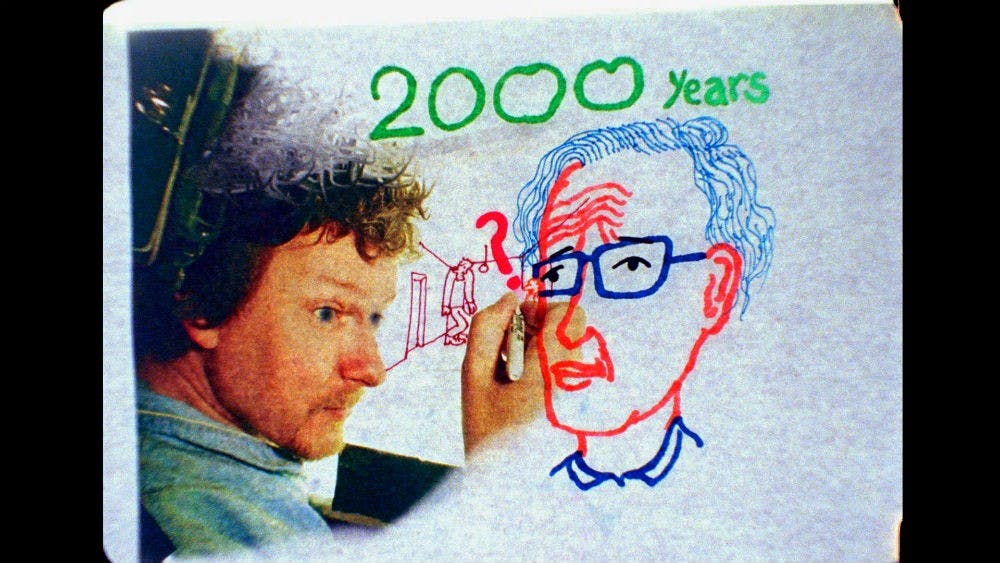Michel Gondry’s films are fanciful romps as they dip their toe into the world of fantasy, but they always have some sort of reality built into them. “Be Kind Rewind” ushered in the “sweded” movement where anyone could remake classic films using cardboard boxes and fishing wire to create backyard imitations. Gondry’s “Is the Man Who Is Tall Happy?” follows in a similar vein of the whimsical with elaborate doodles illustrating the concepts of Noam Chomsky.
The Eagle’s David Kahen-Kashi talked to Gondry about how he made the film.
Eagle: How did you first meet the subject of your film Noam Chomsky?
Michel Gondry: I met him at MIT (Massachusetts Institute of Technology), I was visiting and I was invited at MIT as an artist-in-residence and I met with many teachers and students in many fields. Of course, also, the scientific field and I asked if I could meet with him which was pretty easy actually. Sometimes we talked like 20 minutes, then it was a bit longer and after four years I was meeting him every six months. I proposed the idea of a documentary with him.
E: When did you envision this would be an animated documentary?
MG: I always wanted to do something scientific with animation. When I met with Noam, I thought that would be the perfect occasion to do it. He’s one of the most prominent scientists I’ve heard in a way. That totally matched my ambition. It was very important for me to capture his nature when he’s still alive because there are a lot of people that are important too, but to have the opportunity to talk with him was great. His scientific approach of the world and the language was very captivating for me.
E: What was your preparation for interviewing him?
MG: Well, it was pretty basic. I had in mind that I would start with the first memory because it would on the one hand be very personal and intimate. On the other hand, it would lead to more questions of the formation of memory and the operations of language. That’s where I wanted to start…Many times I tried to bring it back toward his memories and his personal life to sort of humanize the politician, which is no disrespect to him. He’s a very friendly and intimate person. But mostly it went without plan.
E: So did you find it hard to get him to open up about his personal life?
MG: Not really actually. He was pretty open. When he gets into one idea and then the next thing and the next thing cause everything in his mind is connected, so sometimes I had to sort of bruise my chest to get the courage to interrupt him or bring him back something may be simpler. But it was not really hard to ask him about his life.
E: What was it like to shoot on that 16mm camera?
MG: It was a good sort of joke between him and I. He’s not used to working with this kind of camera around. Of course, naturally. But it was too noisy, but I mean he didn’t care. I talk to him about it in editing. And it was complicated because I had to listen to him and ask questions and in the mean time crank my camera and shoot it. So it was a big, but it was part of the project. I don’t regret doing it this way.
This interview has been condensed for style and clarity purposes.
dkahen-kashi@theeagleonline.com





